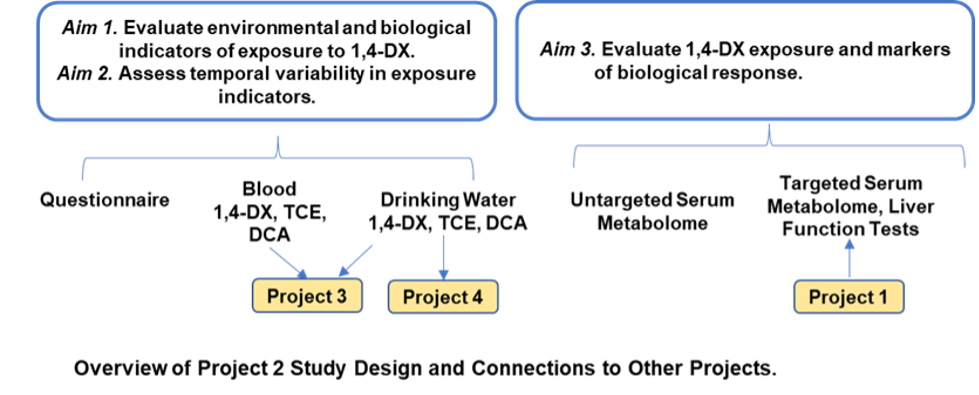Biomedical Research Project 2
Evaluation of Novel Markers of Exposure and Biological Response to 1,4-Dioxane
Goal
To use novel techniques to measure exposure to 1,4-dioxane (1,4-DX) and its co-occurring contaminants and their links to early adverse biological effects in residents of Long Island, NY, an area with many Superfund sites that potentially contribute to contamination of drinking water with 1,4-DX.
Description
A cross-sectional study will be conducted on Long Island in which 1,4-DX (and co-contaminants TCE and DCA) levels will be measured in resident water supplies and blood samples using our newly developed, highly sensitive mass spectrometry-based assay. Untargeted and targeted metabolomic analyses of blood samples will be used to monitor biological responses and identify endogenous markers of 1,4-DX exposure (particularly those reflective of liver carcinogenesis or toxicity).
These investigations aim to establish procedures that sensitively determine exposure and to identify biological changes that precede overt pathophysiological effects of 1,4-DX and its co-occurring contaminants.

Relevance
Widespread contamination of drinking water has been observed in groundwater in Nassau and Suffolk Counties of Long Island, New York, where 75% of the population has water sources with 1,4-DX concentrations exceeding a health guidance level of 0.35 μg/L.
Human exposure and health impacts of 1,4-DX remain poorly understood in part because traditional techniques cannot detect low concentrations of 1,4-DX in biological samples or drinking water samples. Despite its high prevalence in the environment and potential human health risks, there is a paucity of human exposure and health data.
This project will greatly enhance our understanding of the extent of exposure to 1,4-DX (and its co-occurring contaminants) in drinking water and the potential for adverse human health effects. The results will provide scientific evidence for policymakers to set guidelines for concentration standards for 1,4-DX and afford researchers in the Superfund Research Program new tools to detect hazardous substances in the environment as well as prioritize sites for remediation.
In addition, the results of this project will interface with and be used in Projects 3 and 4.
Members
Project Leaders:
Co-Investigators: